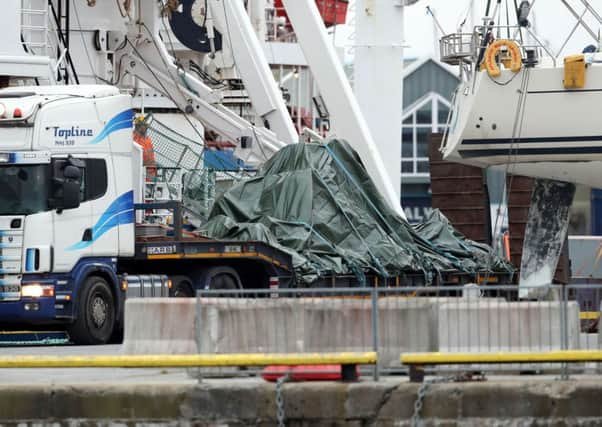Air accident investigators reveal last words of tragic Irish Coast Guard helicopter crew


Air accident investigators have revealed one of the winchmen on Rescue 116, which went down off Co Mayo at 12.46am on March 14, alerted the pilots to an island as they returned to shore to refuel.
And the inquiry has also established that the Sikorksy S-92’s internal warning system did not include the rocky Atlantic outcrop and its working lighthouse in its database.
Advertisement
Hide AdAdvertisement
Hide AdThe search and rescue helicopter crashed after hitting Blackrock Island while coming back from supporting a mission for an injured trawlerman.
On board were Captain Dara Fitzpatrick, the commander of the flight who was pulled from the sea in the hours after the crash, and Captain Mark Duffy, the co-pilot whose body was taken from the cockpit 12 days later by Navy divers working at depths of 40 metres.
The bodies of winchmen Paul Ormsby and Ciaran Smith have not been found despite weeks of intensive seabed, surface and shore searches.
Ireland’s Air Accident Investigation Unit (AAIU) released its preliminary report on the crash which stated that the helicopter’s Honeywell Enhanced Ground Proximity Warning System (EGPWS), which alerts pilots to imminent danger from terrain and obstacles, does not include either the terrain of Blackrock island or the lighthouse on the island.
Advertisement
Hide AdAdvertisement
Hide AdThe AAIU said: “The investigation is continuing to engage with Honeywell and other parties/agencies to reach a full understanding of this issue.”
The EGPWS is designed to assist the pilots and reduce the risk of controlled flight into terrain and it offers both visual and aural alerts when there is a risk of a crash.
The manufacturer told the AAIU that it had looked at two alternative sources for terrain data and while they mark Blackrock the company said that the actual altitude of the island is “considerably higher”.
The AAIU called for CHC Ireland, which operates the Irish Coast Guard search and rescue helicopters, to review and re-evaluate all route guides used in the aircraft.
Advertisement
Hide AdAdvertisement
Hide AdIt said this should be done with a view to enhancing the information provided on obstacle heights and positions, terrain clearance, vertical profile, the positions of waypoints in relation to obstacles and EGPWS database terrain and obstacle limitations.
The investigation found Rescue 116 pitched up rapidly in the final seconds of the flight before it hit the western end of Blackrock and “departed from controlled flight”.